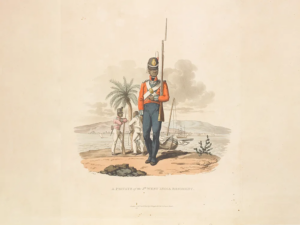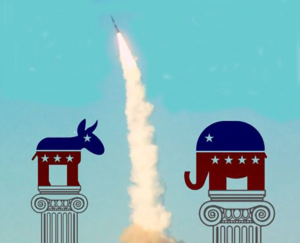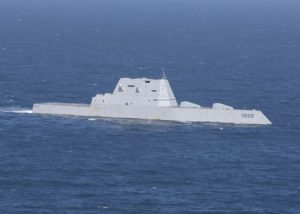The Arctic was once an oasis of international cooperation. Russia’s invasion brought it to a halt.
Russia’s invasion of Ukraine is rippling throughout the world, and some of the strongest waves are crashing in the far north.
There, Russia’s aggression has led to the suspension of the Arctic Council, the main international forum for cooperation in the Arctic, which Russia, awkwardly, was slated to chair until 2023.
For decades, the Arctic in general — and the council in particular — was something of an oasis from tense and raucous international relations, working on trade, environmental, and scientific issues while carefully eschewing security concerns. The council continued to operate after Russia’s invasion of Crimea in 2014, for instance.
But the latest invasion was a bridge too far, posing “grave impediments to international cooperation,” according to a joint statement from the other seven Arctic Council members in March.
That’s left what had been a unified group of nations adrift in a critical time for the Arctic: Climate change is quickly altering the Arctic landscape, creating new economic opportunities, more headaches for infrastructure on land, and new friction points between countries. The confluence of Russia’s invasion of Ukraine and climate change stand to alter balance of trade and security in the Arctic irrevocably, and a region that once avoided the troubles of the rest of the world is now being confronted by them.
Russia’s invasion of Ukraine fractured the delicate peace in the Arctic
Despite the recent tensions, countries in the far north have long aspired for “Arctic exceptionalism,” the idea that the region would remain immune from political wrangling and conflicts brewing in other parts of the world.
“The Soviet Union is in favor of a radical lowering of the level of military confrontation in the region,” said Soviet leader Mikhail Gorbachev in a speech in 1987. “Let the North of the globe, the Arctic, become a zone of peace. Let the North Pole be a pole of peace.”
Since then, Arctic exceptionalism has largely held, with countries in the region trying to work together and overlook their differences in other areas. In 1996, Arctic nations founded the Arctic Council. Until Russia’s invasion of Ukraine, it was composed of eight states: Canada, Denmark (via Greenland), Finland, Iceland, Norway, Russia, Sweden, and the United States. The council also includes six permanent groups representing Indigenous people in the Arctic.
Over the years, the group established agreements on scientific research, protecting fisheries, conducting search and rescue operations, developing environmental rules, and defending the rights of Indigenous people. The council, however, explicitly does not deal with military issues.
Countries have also pursued their own economic interests in the Arctic outside of the council. Russia, the country with the longest Arctic coastline, has vastly expanded its footprint in the Arctic in recent decades, building roads, airports, power plants, and nuclear-powered ice breakers, leaning into fossil fuel extraction to boost its economy. Oil and gas provide 40 percent of Russia’s federal budget and account for 60 percent of its exports. Overall, it generates about 20 percent of its gross domestic product above the Arctic Circle, mainly from oil and gas, but also from mining minerals and metals.
“Russia is hell-bent on developing Arctic oil and gas resources because it has no other choice,” said Malte Humpert, founder and a senior fellow at the Arctic Institute think tank. “Purely from a logistical and technical aspect, what Russia has achieved in the Arctic is really, really impressive.”
Russia is establishing new shipping routes through the Arctic as well. And to protect all this economic development, Russia’s expanded its military presence in the region, with new bases, hardware, and troops. It’s also conducting long-range bomber flights. “Over the next 30 years, the Arctic will be critical for Russian economic survival,” according to a 2021 US Army strategic plan.
“The question has always been, where do legitimate security interests end and where does militarization of the Arctic begin?” Humpert said.
That question makes some other countries uneasy, particularly given that they have stakes in the Arctic too. China has become a major customer for Russian fuels from the Arctic and is now the second-largest shipper in the region. The US Army report said that Russia and China could “seek to use military and economic power to gain and maintain access to the region at the expense of US interests.”
Russian militarization, and its invasion, have spurred other countries to step up their military activities in the region. NATO forces are now conducting exercises in the Arctic, which Russia has warned could lead to “unintended incidents.” The US has deployed F-35 fighter jets to Alaska and is conducting its own drills in the area.
At the moment, all that’s happened are drills. But having so much military might in a place that was supposed to be “a zone of peace,” has some experts concerned. “We’re basically back to the Cold War in terms of level of activity,” said Robert Huebert, an associate professor of political science at the University of Calgary.
The Arctic Council was never meant to delve into military matters. But the hope was that the cooperation it fostered in other areas would minimize the chances of aggression. However, the invasion may end up excluding Russia from the Arctic Council for good, according to Huebert.
For one thing, Russian President Vladimir Putin is looking to build a new polar organization with China. “If in fact he’s successful in doing this, I don’t see how the Russians can be brought back,” Huebert said.
Sweden and Finland are also considering joining NATO, the North Atlantic Treaty Organization, as a result of Russia’s invasion. That could become a permanent wedge between Arctic nations. The prospect of NATO expanding its membership was a big reason why Russia invaded Ukraine to begin with. “The moment Finland and Sweden join NATO, I just don’t ever see the Russians coming back to the Arctic Council,” Huebert said.
Climate change is creating new opportunities and flashpoints in the Arctic
The Arctic itself is rapidly changing. It’s warming more than twice as fast as the global average, reshaping the icy ocean and the lands around it. Arctic sea ice is declining at its fastest rate in 1,500 years.
But while the Arctic is warming quickly, the effects are not equal across the region. “One of the things that climate change has really illustrated is that there’s more than one Arctic,” Huebert said. Rising temperatures play out differently depending on whether it’s on Alaskan permafrost, Finnish tundra, or Greenland’s ice sheet. Even within the Arctic, some places are heating up more than others.
Since 1900, the Arctic has warmed on average by 2 degrees Celsius, 3.6 degrees Fahrenheit, fueled by the heat-trapping gasses from burning fossil fuels. That’s playing out several key ways.
Fish stocks are moving further north as species like cod and redfish seek cold refuge from warming oceans. Many Arctic nations count on fishing, but right now, there is a moratorium on fishing in the Arctic for at least 15 years. After that, the waters could become a lot more crowded than they are now: “I think the boats will follow eventually if that moratorium is lifted,” said Mia Bennett, an assistant professor of geography at the University of Washington.
Shipping has already become easier. Arctic sea ice is not just retreating to record lows, but the ice that remains is also often thinner, allowing icebreakers to more readily guide vessels through frigid waters. In 2016, the Crystal Serenity became the first cruise ship to transit the Northwest Passage. Warming is also facilitating offshore oil and gas drilling in the Arctic. The US Geological Survey estimated the Arctic holds 13 percent of the world’s undiscovered oil and 30 percent of undiscovered natural gas.
But warming is also making life more difficult in other ways. “It’s actually getting much trickier on land to build stable terrestrial infrastructure,” Bennett said. Higher temperatures means the permafrost isn’t so permanent. The softer ground is causing roads to buckle and buildings to list. The Pentagon recently warned that US military installations in the Arctic are being damaged by the effects of warming. Onshore drillers have even had to chill the ground under their rigs in order to stabilize them and continue drilling.
Shorter and warmer winters mean the ground doesn’t harden back up as much and rivers don’t freeze over, making it more difficult to maintain ice roads to bring in supplies. Wildfires have also ignited in the Arctic Circle as climate change has fueled heat waves and extended fire seasons.
Russia has faced some of the worst of it. Massive wildfires in Siberia blanketed the country in smoke in recent years. The fires this year are already spreading at an unprecedented rate. On June 20, 2020, the Russian town of Verkhoyansk recorded a temperature of 100.4 degrees Fahrenheit, the hottest temperature ever recorded north of the Arctic Circle.
“All this is largely connected to the climate change — both global and in our country,” Putin said in August.
While climate change is an omnipresent factor in the Arctic, Huebert cautioned that it’s not necessarily the “cause” of many of the recent developments in the region. Russia has faced strong economic pressure to exploit more of its natural resources and would likely be expanding its footprint even if the Arctic hadn’t warmed. And despite the changes in the climate seen so far, the Arctic remains a difficult place to work and live. “It’s being definitely facilitated by climate change, it’s making it easier, but it’s not making it easy,” Huebert said.
Still, climate change is acting as an accelerant for activity in the region. Those activities, particularly fossil fuel extraction, in turn are speeding up the transformation of the Arctic. And all this new bustle in a once frigid and desolate part of the world, coupled with climate change, could then spark more conflict.
The future of the Arctic is on thin ice
Intelligence agencies are now trying to anticipate future disruptions in the Arctic and have identified some potential ignition points.
“We assess that Arctic and non-Arctic states almost certainly will increase their competitive activities as the region becomes more accessible because of warming temperatures and reduced ice,” reads an October 2021 report from the National Intelligence Council. “Competition will be largely economic but the risk of miscalculation will increase modestly by 2040 as commercial and military activity grows and opportunities are more contested.”
One looming concern is how countries will claim territory in the newly revealed Arctic ocean. Countries currently control the water stretching 200 nautical miles from their shorelines as exclusive economic zones.
Claims beyond that maritime border depend on the boundaries of the continental shelf, where a country’s land mass extends out underwater before dropping off into the deep ocean. Arctic nations have been mapping their shelves underwater with tools like probes and submarines to establish their claims. However, some claims overlap, particularly between Canada, Russia, and Denmark, and with the suspension of the Arctic Council, they may not get resolved.
“That simply will be postponed,” Huebert said. If more than one country tries to claim these disputed regions, that could ignite a political — or even military — conflagration.
Friction may also build up around shipping. Russia is aiming to expand its shipping capacity to 80 million tons per year by 2024, up from just over 1 million tons today. “[T]he decreasing amount of sea ice will lead to new routes opening in the future and may become an area of contention as Arctic nations attempt to exert control over key sea lanes,” the US Army report warned.
And while Russia’s oil and gas could get hit with sanctions from Europe, it will likely still have plenty of other buyers, namely India and China. Mining and drilling can cost 50 to 100 percent more in the Arctic than they cost at lower latitudes, but with global fuel prices rising, there’s ample demand, so maritime traffic will continue to grow for the foreseeable future.
On the US side, some are pushing for the country to establish a stronger diplomatic presence in the region, particularly as tensions rise.
“I have directly asked President Joe Biden to consider expanding America’s Arctic leadership across the executive branch, within both the State and Defense Departments, on the National Security Council and beyond,” wrote Alaska Sen. Lisa Murkowski last year in the Foreign Service Journal. “The United States is one of the only Arctic countries without an Arctic ambassador — a diplomatic post that even many non-Arctic countries have.”
Efforts to address climate change stand to suffer the greatest effects of Arctic instability. As the fastest warming region, it’s a critical area for scientific research. Changes in the Arctic can alter weather patterns around the world. And the 4 million people living in the Arctic Circle are on the front lines of some of the most radical shifts in ecosystems, from animal extinctions to emerging diseases.
Without collaboration at the North Pole, the world loses a window into a region with consequences for the whole planet, according to Humpert. “If we cannot cooperate in the Arctic with regards to climate change and the challenges that brings, then where can we?”




